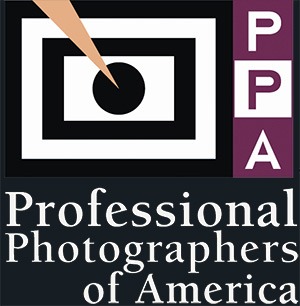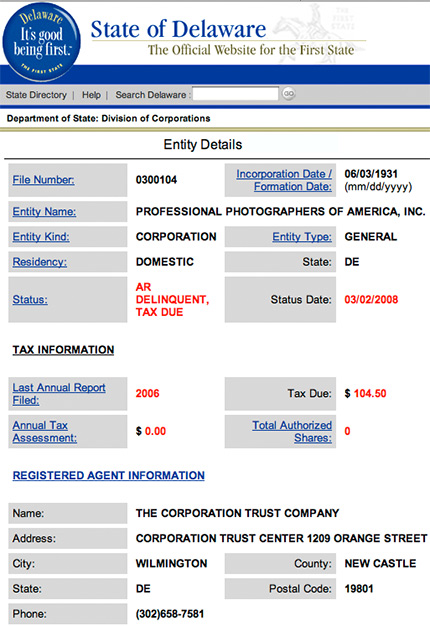A Closer look: PPA's Orphan Works Stance
 So, why has the PPA come out in support of the House version of the Orphan Works bill? Well, at first, let me say, this post is made upon some educated assumptions and observations, as well as corporate tax records. I'll be speaking in broad brushes here, but it's still worth a read. This post is meant to try to make some sense out of something that just seems unconscionable - that is, the current state of the Orphan Works bills, and how anyone could come out and support them.
So, why has the PPA come out in support of the House version of the Orphan Works bill? Well, at first, let me say, this post is made upon some educated assumptions and observations, as well as corporate tax records. I'll be speaking in broad brushes here, but it's still worth a read. This post is meant to try to make some sense out of something that just seems unconscionable - that is, the current state of the Orphan Works bills, and how anyone could come out and support them.
First, every trade association has a fairly well defined membership. For example, you won't find many advertising photographers affiliated with the National Press Photographer's Association. So too, you won't find many school portrait photographers members of the Advertising Photographers of America either. That said, PPA did make an effort to take over the APA, and then set their sights on the ASMP, wanting to absorb one (or both) under the PPA umbrella. When neither of those efforts worked, they created Commercial Professional Photographers International.
The Professional Photographers of America, a not-for-profit association, has 19,000 members worldwide. The PPA's website notes that the PPA "began providing education and a sense of community to the photography industry since 1880". The organization is made up, in large part, by wedding, school portrait, family portrait, and special event photographers, and it is headed up by their CEO, David Trust.
I have come to know David Trust for some time, and he is doing a remarkable job serving his constituents. Yet, that service is not always beneficial to the wide variety of photographers and creatives outside of his purview. It's nice when his efforts benefit non-PPA stakeholders, but it's a nice fringe benefit to PPA's efforts, not always the driving force. However, the legislation PPA was engaged in working on behind closed doors affects all creatives, and that's where criticism of them lay.
Trust's congressional testimony, while technically accurate, is curious when he says "As the CEO of Professional Photographers of America, I am here today representing 33,000 professional photographers. This includes PPA and it affiliates, as well as three other organizations that have endorsed our testimony: the International Association of Professional Event Photographers, Commercial Photographers International and the Student Photographic Society."
It's curious because the " International Association of Professional Event Photographers" website's ownership records, the Commercial Photographers International - website's ownership records, and the "Student Photographic Society" - website records, all list the same address in Atlanta, the same home of PPA. In fact, the student organization's website records list PPA as the owner. However, you won't find disclosure on the CPI, IAPEP, or others that they are owned by/related to PPA. Also located there is the Evidence Photographer's International Council, these organizations which, while on the surface, appear to be separate, are in-fact, a part of a web of organizations, the Alliance for Visual Artists, or AVA, their splash page website is here. So when PPA says something like "we're speaking for all these organizations", as if they have assembled a broad array of groups, they're more accurately saying something like "we're speaking for all of the divisions of our organization" or something of that nature. Their headquarters are in Atlanta Georgia, as you can see here on the Secretary of State's website for the state, and their 2008 registration with the state can be seen here. A review of their records reveals that PPA is actually a Delaware Corporation. Below is information (as of today) from the Delaware Secretary of State's website:
 (click the image to see the full record from the Delaware database). Unfortunately for PPA, Delaware's records indicate they are delinquent in their taxes. Now, this may be an error, and we should allow for that, but the status date is from the beginning of March, so who knows.
(click the image to see the full record from the Delaware database). Unfortunately for PPA, Delaware's records indicate they are delinquent in their taxes. Now, this may be an error, and we should allow for that, but the status date is from the beginning of March, so who knows. With all of this in mind, how does this affect how the PPA worked to get a carve-out that protected the best interests of it's members?
First, let's look at what the PPA's members are most concerned with when it comes to copyright - the unauthorized duplication of their member's images by their clients, and their clients are most often individual people, nor corporations, ad agencies, and so forth. Again, remember, I am painting with a broad brush here. A PPA member almost would never get statutory damages from a wedding client, for example, for the infringement of their copyright when they made copies at Wal-Mart. Further, this legislation would not protect photographers, or the PPA, from pursuing claims against the Wal-Marts and one-hour photos of the world who did the infringing at the request of the customer who wanted a 5x7 from their wallet-proof photos. PPA did get a carve-out for "useful articles":
(d) Exclusion for Fixations in or on Useful Articles- The limitations on monetary and injunctive relief under this section shall not be available to an infringer for infringements resulting from fixation of a work in or on a useful article that is offered for sale or other distribution to the public.This means keychains, t-shirts, coffee mugs, and so forth. In fact, it could well also include an 8x10 school photo duplication, wedding album, and so forth. Things that are revenue producers for PPA members. Thus, Trust did a great job for his members, but those who don't need this carve-out protection don't benefit from Trust's place at the table.
Many in the photographic community are spending a great deal of time criticizing PPA and it's leadership, including me, because it was expected that PPA would represent and defend all photographer's interests. Perhaps this expectation was misguided. Perhaps, mis-understood?
PPA specifically stated to the ad-hoc group Imagery Alliance that it would negotiate on behalf of all it's member groups, when it was written to IA members:
"We are reading everything that is being written by each of you. It is incorporated into everything we discuss in the room. There is nothing that you are concerned with that isn’t being covered."Moreover, they requested that all the other IA groups cease their own individual advocacy efforts regarding Orphan Works because it made everyone look like they weren't unified, and further, they asked all the IA members to ask their own membership to cease writing to their representatives.
As we arrive at half-time in this real-world-real-consequences game, it seems that the idea that if you can't save everyone, then save those to whom you answer to. PPA, and Trust did just this. It was wrong for House staff to preclude other organizations from the table. Photo organizations outside of the negotiations certainly placed their trust in those at the table to negotiate for everyone, yet those not at the table either fell (or were thrown) under the bus. Trust noted who he was speaking for in his testimony, and it wasn't NPPA, APA, ASMP, GAG, Illustrators, or anyone else. It was PPA, and it's subsidiary, or sister organizations. PPA got what it needed. Those not benefiting from their efforts are right in being very angry, dismissed, or feeling cast aside. Sure, it would be nice to have the bill done properly and those at the table looking out for everyone, but that's a bit altruistic.There is an old saying, usually attributed to firefighters, doctors, and others who face a seemingly insurmountable task of trying to save everyone. "save who you can, and mourn those you could not help."
Please post your comments by clicking the link below. If you've got questions, please pose them in our Photo Business Forum Flickr Group Discussion Threads.

5 comments:
When photographers start look at each other as equals, then you will be able to build a consensus among them and their organizations, ASMP, PPA, APA, etc. But as long as you have areas of professional photographers, say commercial shooter, looking down their noses at say wedding photographers, you will never get an organization that represents all professional photographers interests. First we must learn to accept and respect each other and what we do.
If you look at the PPA's magazine The Professional Photographer many of the articles these days are about commercial photographers so it seems they use that area of the business to keep the magazine interesting but when it came time for representation they only looked after the interests of the wedding/portrait crowd.
A wedding shooter considered an equal to a high-end major production ad shooter - hah, that is the best laugh I've had all day. Almost as funny as Pearlman lying to Congress and saying he represents the views of the majority of photographers.
Thanks for the interesting read, John. They should have had you appearing before congress. I've heard you speak at an NPPA event, and I'd feel well-served to have you speaking for my interests on this matter, and I'm a newspaper/wedding/small time commercial guy.
The truth is, we should all be concerned with things like this whether we're comfortable in our particular niche or have goals to move into other photographic endeavors.
There is a "class" system within the photography world and it is generally unfounded all the way around. I am in the commercial/fine art area and can say that I completely respect wedding/event photographers. Not because I admire their work so much but because of the circumstances they are produced under. Wedding photographers have too many bosses, unreasonable time constraints, the worst props, (meaning the bride, groom and family), and don't get a second chance. Conversely, High end fashion photographers have the best props, the best make-up, the best wardrobe, the best locations, and the time needed to execute properly. Which circumstance would you want to be in? Commercial generally gets paid more but if money is your benchmark for quality or performance, then quality and performance are by definition, secondary.
I am not an event guy because I don't want to work without a net but I respect those who do it.
Post a Comment